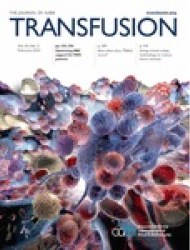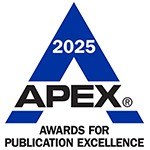 In high-stakes scientific, technical and clinical environments, organizations invest in controls, protocols and measurement to safeguard accuracy, safety and reliability. Those systems matter. Yet, if overlooked, one critical relational factor can quietly erode even the most sophisticated systems: trust.
In high-stakes scientific, technical and clinical environments, organizations invest in controls, protocols and measurement to safeguard accuracy, safety and reliability. Those systems matter. Yet, if overlooked, one critical relational factor can quietly erode even the most sophisticated systems: trust.
Trust shapes how information flows, how teams respond under pressure, and whether people feel safe raising concerns before they escalate. It influences decisions and innovation as surely as any technical safeguard. Because it is relational rather than procedural, trust is often left unexamined in many organizations. That hidden variable can quietly undermine performance or amplify it.
Trust is not a “soft” concept; it is a measurable performance driver. Harvard Business Review identifies trust as one of the most consistent predictors of team resilience, communication quality and sustained performance under uncertainty.¹
Recent global research shows the same pattern. Gallup’s State of the Global Workplace 2025 report found that 21% of employees describe themselves as engaged, down from 23% in 2023.² Engagement is closely tied to trust in leadership, in the organization and among colleagues. When that trust erodes, energy and commitment decline with it.
In a related report, Why Trust in Leaders Is Faltering and How to Gain It Back (2023), Gallup highlighted research showing that when leaders communicate intentions clearly, deliver on promises and treat people with respect, 95% of employees say they trust them. Yet only about one in five employees report experiencing that level of consistency.³
For precision-driven sectors, these findings carry weight. Delays in communication or hesitance to speak up have consequences for safety and reliability. Some failures attributed to technical error may instead stem from relational breakdowns, moments when trust was too weak for people to raise a concern or challenge an assumption.
Trust is dynamic and largely invisible. It cannot be charted on a dashboard or validated through a protocol. Its absence shows up in familiar ways: guarded communication, slower decisions and limited innovation. It gets worse: with cautious communication, delayed escalation and strained collaboration, small hesitation compounds into measurable risk. In environments where every milliliter, minute and the precision of metrics matter, trust is therefore no longer abstract; it is a quality parameter.
Organizations often respond to low trust by adding control. Yet no amount of compliance, oversight or automation replicates what genuine trust produces naturally: candid dialogue, faster learning and aligned intent. At the same time, unquestioned trust can weaken accountability. Harvard Business Review also cautions that high-trust teams may grow complacent when feedback, verification and standards are not maintained.⁴ Trust is not static. It requires calibration and a deliberate balance between openness and accountability.
At Canadian Management Centre, we have spent more than six decades helping individuals and organizations strengthen leadership capability and elevate team performance across sectors including health care, life sciences and engineering. One pattern holds true across them all: trust is earned. It emerges from the daily disciplines of effective leadership: fostering collaboration, facilitating open communication and promoting respect in the workplace.5 Trust governs how people collaborate, share information and recover from setbacks. In high-reliability environments, the ability to cultivate trust is not only a hallmark of effective leadership, but a powerful lever of operational performance.
Because trust operates beneath the surface, leaders must act intentionally to make it visible and durable. The following guiding principles outline actionable approaches to strengthening trust in daily interactions and decision-making.
These principles reinforce trust as a measurable element of performance, as essential to quality outcomes as technical precision or process control. Ultimately, trust is not a behavioral ideal but a structural component of reliability. It deserves the same intentional design, measurement and maintenance as any technical control, because in the most complex and consequential environments, the science of performance begins with the humanity of trust.
These ideas will also be explored in greater depth during the session “Building Trust-Based Teams” at the upcoming AABB Annual Meeting. Participants will examine what often lurks below the surface in organizational culture; how unseen patterns of trust and mistrust influence collaboration, safety and performance; and what leaders can do to strengthen the foundation on which high-performing teams rely.
 Jaime McGillivray is a corporate learning strategist at Canadian Management Centre (CMC). She has worked at CMC since 2005, focusing on partnerships with organizations to develop and implement talent development solutions to achieve organizational strategies and goals.
Jaime McGillivray is a corporate learning strategist at Canadian Management Centre (CMC). She has worked at CMC since 2005, focusing on partnerships with organizations to develop and implement talent development solutions to achieve organizational strategies and goals.

Transfusion is AABB’s scholarly, peer-reviewed monthly journal, publishing the latest on technological advances, clinical research and controversial issues related to transfusion medicine, blood banking, biotherapies and tissue transplantation. Access of Transfusion is free to all AABB members.
Learn More About Transfusion Journal
Keep abreast of what's happening in the field of biotherapies with CellSource - AABB's monthly update on the latest biotherapies news.
To submit news about the blood and biotherapies field to AABB, please email news@aabb.org.
President
Meghan Delaney, DO, MPH
Chief Executive Officer
Debra Ben Avram, FASAE, CAE
Chief Communications and Engagement Officer
Julia Zimmerman
Director of Marketing and Communications
Jay Lewis, MPH
Managing Editor
Kendra Y. Mims, MFA
Senior Communications Manager
Drew Case
AABB News
(ISSN 1523939X) is published monthly, except for the combined November/December issue for the members of AABB; 4550 Montgomery Avenue; Suite 700 North Tower; Bethesda, MD 20814.
AABB is an international, not-for-profit association representing individuals and institutions involved in transfusion medicine, cellular therapies and patient blood management. The association is committed to improving health by developing and delivering standards, accreditation and educational programs that focus on optimizing patient and donor care and safety.
+1.301.907.6977
Email: news@aabb.org
Website: www.aabb.org
Copyright 2025 by AABB.
Views and opinions expressed in AABB News are not necessarily endorsed by AABB unless expressly stated.
Notice to Copiers: Reproduction in whole or part is strictly prohibited unless written permission has been granted by the publisher. AABB members need not obtain prior permission if proper credit is given.
